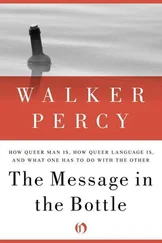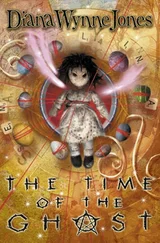Other parts of the genome have also moved in the same direction. Comparison of the physical map of the genes with the linkage map (based, as it is, on recombination) shows that some parts of our DNA are sexier than others, at least in the sense that more recombination takes place at these well named 'hot-spots'. What is more, females are on this criterion sexier than males, as women show more recombination than do their partners.
Sex itself raises other problems — if sex, why sexes? If to shuffle together the genes of two individuals is such a good thing why has evolution not come up with a scheme which allows everyone to mate with everyone else? As we are limited in our choice of partners to those of a different sex, to have just two of them seems very inefficient. Almost all organisms (with the exception of a few simple creatures that have dozens of genders) exist as just males and females. This means that just half the population is available as a potential marc. If there were three genders, then two thirds of the group might be accessible, and a hundred iliHerent reproductive classes could make ninety-nine per cent of our fellows into possible partners. One answer (and it is only one) involves what seems at first sight the antithesis of sex — conflict.
Males are best defined as the sex with small sex cells, sperm; and females as that with large, eggs. Body cells contain DNA not just in the nucleus, but in the cytoplasm which surrounds it. Some is associated with mitochondria, which have genes of their own. Many creatures have yet more in the cytoplasm. It comes from what were once independent beings which now hitch a ride within cells. This DNA (like that in the nucleus) has its own agenda, which is to be copied and passed to the next generation. The cytoplasm is its territory and like a blackbird or a tiger it defends its homeland against invaders. If sperm and egg were the same size (and each had its own population of extraneous DNA) there is a danger of war breaking out on fertilisation. Then, two sets of cytoplasmic genes find themselves in the same space in the fertilised egg. Just like tigers, one set might attack the other until it prevails. This is expensive and could even harm the genes in the nucleus.
The dispute is resolved because one sex — the males — unilaterally gives up. The sex which surrenders passes on none (or very few) of its cytoplasmic genes (which are excluded from the sperm at fertilisation) while the winner, the egg-maker, passes on large numbers. As in most wars, the stable number of opponents is two, and the existence of males and females (rather than dozens of genders) represents a truce in the battle of the sexes.
Biology now understands why sex is there and why it is limited to the tedious dualism of male and female. The technical revolution in genetics has also shown how simple sex is in — and at — conception and what a complicated tangle it later becomes. Existence is, it seems, in its essence female and masculinity just a modification of the feminine experience. The Y chromosome forces the embryo into manhood. If, for some reason, the Y is absent the foetus develops as a female. Some children arc born with an extra X chromosome. Their chromosome set is XXY. They are male, but sterile. People with half a do/en X chromosomes and a Y have been found and these too are male, 1 reminder of the power of this small chromosome to impose its function on the X.
The discovery of a few males with two X chromosomes helped in the search for the gene responsible. They break the rule that to be a male needs a Y. In fact, in these men (most of whom are unaware of their condition) a tiny part of the Y chromosome has been broken off and attached to an X. This is then armed with the information needed to inflict maleness. Because the transferred segment is small the augmented X was useful in tracking down the crucial gene. The gene is found in all male mammals and is similar to another that determines what passes for masculinity in yeast.
The machinery that decides the sex of a fertilised egg may be simple, but the road to adult gender is a complicated one. Sexuality is a flexible thing. In crocodiles, for example, it is determined by the temperature at which the eggs develop, so that females must lay their clutches in a place with a temperature range which allows both males and females to be produced. In certain fish, embarrassment — or social pressure — is important. A shoal of females is guarded by a male. To remove him leads to a period of confusion, until one of the females changes sex and assumes his role.
Once sexuality gets started, great consequences flow from it. Most of natural history is the scientific study of sex, as the characters which differentiate birds, insects and flowers from each other are, in the main, associated with reproduction. To compare the sex lives of different animals hints at how sex evolved and why animals indulge in one or other reproductive preference. Although humans are in many ways distinct, it might even be possible to learn something about our own habits by looking at those of other species.
Many people have attempted to draw sweeping conclusions about humankind from studies of the private lives of monkeys and apes. It is always dangerous, and usually futile, to try to explain human behaviour in the simple terms used to study animals. Attempts to do so almost all fall into the 'pathetic fallacy', the literary trap which sees emotions mirrored in the weather or the landscape. Occasionally — very occasionally, as in WutberingHeights - this works, but most of the time it ends in bathos. Anthropology has the same problem. It is fatally easy to read into the animal world what we would like to see in our own, to explain the human condition as an inevitable consequence of our biology. Even Charles Darwin, a veritable Bronte among sociobiologists, was at fault. Hidden in his unpublished notebooks is the damning phrase 'Origin of Man now proved — metaphysics must flourish — he who understands baboons will do more towards metaphysics than Locke.'
Metaphysics is one thing, sex another. The Nobel Prizewinner Konrad Lorenz saw us as 'killer apes' anxious to pass on our own genes by murdering the opposition (which may explain his own flirtation with the Nazis), and any decent airport has a row of paperbacks that purport to explain human nature as the remnants of a history as primates with one or other social preference. Until a few years ago the study of sexual behaviour was little more than a set of unconnected anecdotes. It has been transformed by the rebirth of one of the oldest techniques in biology. Comparative anatomy is what convinced Darwin that men and women are related to monkeys and apes. The new science of comparative behaviour hints at how and why their sexual conduct evolved.
Sex is filled with strife, with the very existence of males and females the resolution of a war to pass mi cyioplasmic genes. Further conflict arises as males struck- lor mates and as males and females disagree about the tiuu-aiul effort needed to raise young. The conflicts among nuiles lead to the evolution of spectacular organs of attack such as antlers. Other traits — such as a baboon's gaudy face — are more subtle statements of male talent and may evolve because they are preferred by the opposite sex.
There is little evidence (in spite of much prurient speculation about beards, breasts and buttocks) that humans have attributes of this kind but, as in most animals, conflict between human males is greater than between females. To be a man is dangerous. At birth there are about 105 males to every roo females, but this drops to 103 to 100 at the age of sixteen and in their seventies women are twice as abundant as men. Men have more accidents, more infectious diseases and kill each other more often than do the opposite sex. As might be expected, eunuchs and monks live for longer than do those condemned to a normal sex life.
Читать дальше
Конец ознакомительного отрывка
Купить книгу












